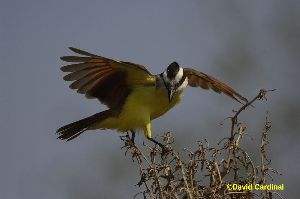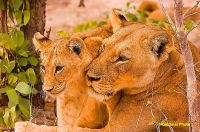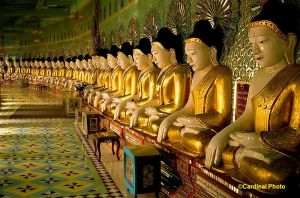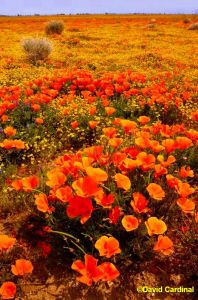- Photo Safaris
- Alaska Bears & Puffins World's best Alaskan Coastal Brown Bear photo experience. Small group size, idyllic location, deluxe lodging, and Puffins!
- Participant Guestbook & Testimonials Candid Feedback from our participants over the years from our photo safaris, tours and workshops. We don't think there is any better way to evaluate a possible trip or workshop than to find out what others thought.
- Custom Photo Tours, Safaris and Personal Instruction Over the years we've found that many of our clients & friends want to participate in one of our trips but the dates we've scheduled just don't work for them or they'd like a customized trip for their family or friends.
- Myanmar (Burma) Photo Tour Myanmar (Burma) Photo Tour December 2017 -- with Angkor Wat option
- Reviews Go hands-on
- Camera Reviews Hands-on with our favorite cameras
- Lens reviews Lenses tested
- Photo Accessories Reviews Reviews of useful Photo and Camera Accessories of interest to our readers
- Useful Tools & Gadgets Handy tools and gadgets we've found useful or essential in our work and want to share with you.
- What's In My Camera Bag The gear David Cardinal shoots with in the field and recommends, including bags and tools, and why
- Articles About photography
- Getting Started Some photography basics
- Travel photography lesson 1: Learning your camera Top skills you should learn before heading off on a trip
- Choosing a Colorspace Picking the right colorspace is essential for a proper workflow. We walk you through your options.
- Understanding Dynamic Range Understanding Dynamic Range
- Landscape Photography Tips from Yosemite Landscape Photography, It's All About Contrast
- Introduction to Shooting Raw Introduction to Raw Files and Raw Conversion by Dave Ryan
- Using Curves by Mike Russell Using Curves
- Copyright Registration Made Easy Copyright Registration Made Easy
- Guide to Image Resizing A Photographers' Guide to Image Resizing
- CCD Cleaning by Moose Peterson CCD Cleaning by Moose Peterson
- Profiling Your Printer Profiling Your Printer
- White Balance by Moose Peterson White Balance -- Are You RGB Savvy by Moose Peterson
- Photo Tips and Techniques Quick tips and pro tricks and techniques to rapidly improve your photography
- News Photo industry and related news and reviews from around the Internet, including from dpreview and CNET
- Getting Started Some photography basics
- Resources On the web
- My Camera Bag--What I Shoot With and Why The photo gear, travel equipment, clothing, bags and accessories that I shoot with and use and why.
- Datacolor Experts Blog Color gurus, including our own David Cardinal
- Amazon Affiliate Purchases made through this link help support our site and cost you absolutely nothing. Give it a try!
- Forums User to user
- Think Tank Photo Bags Intelligently designed photo bags that I love & rely on!
- Rent Lenses & Cameras Borrowlenses does a great job of providing timely services at a great price.
- Travel Insurance With the high cost of trips and possibility of medical issues abroad trip insurance is a must for peace of mind for overseas trips in particular.
- Moose Peterson's Site There isn't much that Moose doesn't know about nature and wildlife photography. You can't learn from anyone better.
- Journeys Unforgettable Africa Journeys Unforgettable -- Awesome African safari organizers. Let them know we sent you!
- Agoda International discounted hotel booking through Agoda
- Cardinal Photo Products on Zazzle A fun selection of great gift products made from a few of our favorite images.
- David Tobie's Gallery Innovative & creative art from the guy who knows more about color than nearly anyone else
- Galleries Our favorite images
DPS 4-13: 8-bit vs. 16-bit and choice of colorspaces, plus Global Warming Survey
DigitalPro
Shooter
DigitalPro Shooter
DPS 4-13: Digital Workflow Decisons--8-bit vs. 16-bit and Colorspace Choice
One of the joys of digital photography is the ease and flexibility of working with our images on the computer. But along with that flexibility has come the stress of sorting through literally dozens of options for how to capture, process and store our images. In this issue of DigitalPro Shooter we'll tackle a couple that have been nagging at many of you for awhile: 8-bit vs. 16-bit workflows and your choice of colorspaces. Also a quick reminder that we have openings for our Southeast Asia trip in January, the South Texas birding trip in April and Africa and Alaska later in 2007. Whether you're interested in just learning the basics of digital photography and getting some great images or really digging in and learning image processing in depth the small size of our trips ensures that you'll get the personalized attention and instruction that'll make the trip a success. We hope to see you on one!
It's easy to forget that back in the days of film there were heated debates about choices of chemicals, enlargers and other esoterica. Today, in the era of digital the debate over 8-bit vs. 16-bit and Adobe RGB vs. sRGB seem so important that it's easy to forget that they are all just different tools for communicating our vision as photographers. In this issue of DPS we'll take you through the most important considerations in setting up your workflow and hopefully save you some hours you might otherwise spend agonizing about these choices.
Cardinal Photo Safaris Update:
|
||||||||||
Picking your workflow: 8-bit vs. 16-bit
Often locked in what appears to be a life or death struggle the adherents to the 8-bit workflow school and the 16-bit workflow school paint extreme pictures of your future based on your choice of bit-depth. Over-simplified the arguments go more or less like: Use 8-bits because your files are smaller, they process faster, and you'll never notice the difference, vs. Use 16-bits because your camera can capture nearly that much detail, your nifty new computer won't run much slower, you might see the difference, and if you don't see the difference now you sure will when that really cool new Daylight Reality display is invented sometime really soon now.
So what is the reality? The truth is that, like all these choices, it depends. For 99% of all images and 99% of all uses, 8-bits in Photoshop is plenty. However, if you're going to be doing a lot of fine art printing on high-end printers, particularly if you use fancy wide-gamut colorspaces like those we describe below, you'll sleep better at night knowing that every possible bit of your original image has been preserved for posterity.
In my case I normally process in 8-bits. It makes things go faster and take less space. And the difference is normally invisible--plus most output devices can't take advantage of any more in any case. Finally, since I keep the original Raw file anyway I could always go back and re-process it if I really wanted to get something more out of an image at some point in the future. But for images with subtle tonal gradations that I know I'm going to print in very large sizes then I sometimes export 16-bits from my choice of Raw converter and
One of the other confusing issues about bit depth is the confusion about our cameras being 12-bits. Logically, most of us would assume that since our D-SLRs capture 12-bits of information that we'd want 12 or more bits to fully represent the colors our camera saw. However, the 12-bits of our camera sensors are linear so they represent the linear light input from 1 to 4095 "photons" per photosite (pixel). But once the raw data is encoded into RGB it is logrithimic (that's the simplified definition of gamma) so that 256-values (8-bits) can be used to cover the entire range of your camera's sensor. Obviously there are some tradeoffs involved, so keeping the data in 16-bits provides the maximum amount of information, but for most purposes the gamma encoded 8-bit spaces can cover the range of your camera.
sRGB vs. Adobe RGB vs. Pro Photo RGB
So which space should you use? If you want the ultimate in image quality and are willing to put up with large file sizes and slower processing, then a 16-bit workflow with a large working space like Pro Photo RGB is a great choice. This is the the workflow used by some of the purist of Photoshop gurus like Jeff Schewe.
However, if you're processing thousands of event images a week and rushing them off to a lab which wants sRGB anyway, an 8-bit sRGB based workflow will be the most productive. Of course if you start by shooting Raw images and keep them around you've hedged your bets as you can always go back and do more sophisticated or extenisve processing from the Raw files.
The most practical choice for all around photography lies in the middle. An 8-bit workflow with Adobe RGB (or the slightly more tweaked Bruce RGB if you prefer) is a solid performer for all current D-SLR images and desktop printers. It's not ideal for purists as there are colors your D-SLR can capture (in raw mode) and your printer can print (if you have a high-end printer) that are beyond the bounds of Adobe RGB, but for 99% of your images you'll never see a difference.
One quick trick you can use to keep your 8-bit Adobe RGB workflow intact for the 99% of the images where it works is to look at the histogram in your Raw converter. In Camera Raw, for example, you can see the effect of using different output spaces on your histogram. If using Adobe RGB your conversion causes clipping you can shift to Pro Photo RGB for that image. You may want to also output that image in 16-bit, as the much larger colorspace of Pro Photo RGB begs for the added precision given by 16-bits to cover the entire space.
What about LAB?
LAB is one of the most powerful ways to look at color. By separating Luminosity from colors, and representing color channels in opponent color form (Red vs. Green, Yellow vs. Blue) much like part of the human visual system does LAB allows us to create dramatic changes in our images with little work. I've written extensively on how you can do this after getting my eyes opened by Dan Margulis' excellent book: Photoshop LAB Color.
But LAB isn't really much good as a way to represent our images while we're not working on them. It can't be directly viewed or printed (at least not on today's output devices). There is some controversy over whether those who convert their images to and from LAB should use a 16-bit workflow to minimize any possible side effects. I've done it both ways and have never had a visible problem from an 8-bit workflow with a photograph. Apparently computer generated gradients or graphics do require 16-bits to survive the conversions, but frankly I don't work with those so I haven't worried about it.
Let's hear from you!
Let us know what is working for you in our Photo forums, where we've had a number of active discussions on digital workflow choices depending on the needs of the individual photographer.
Event News
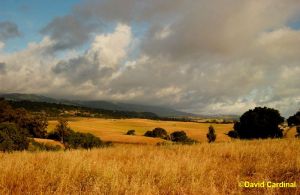 We auctioned off this print to help raise money for open space preservation |
I had a great time speaking at the Wildlife Photographers of Silicon Valley on October 16th about Photographing on Safari illustrated by plenty of cool safari photograhy. They're a wonderful group of active photographers founded by Monte Smith and his wife Laurie. The art sale and auction Nature's Inspirations, a fund-raiser for the Committee for Green Foothills--was also a tremendous success. We were able to share (and sell) a number of pieces as well as help educate many of the attendees about the endangered species in many of the images we displayed.
|
Global Warming: How it affects you & an action you can take
Most people are now convinced that our environment is changing and the climate is getting warmer. Whether you believe humans are the cause or we are just witnesses, there is a lot of good science that shows our emissions of "greenhouse" gases are making things worse. That makes wildlife photography--or frankly any kind of ecotourism--a little tricky. Here we are setting out to learn more and teach more about our natural world but to do that we often travel by car, train, boat or plane--all of which emit greenhouse gases. An interesting option to help with this conundrum are emissions credits. By donating to one of several non-profit groups such as carbonfund.org, your dollars will be used to fund projects that are designed to reduce greenhouse gas emissions somewhere.
I'm not completely sold on the concept, as it seems far too much like buying our way out of a problem instead of actually changing our behavior--and I think it could send an unfortunate signal to the developing countries that rather than reduce emissions they should just work to be rich enough not to have to--but if you're going to travel anyway then this approach does at least provide some offset. We'd like to get your opinions on the issue and the concept of offsets. In particular we're consdering offering the option of applying a portion of participants' safari fees to offset the emissions created by the safari. Let us hear from you in the Digital Cafe section of our Photo forums. In particular if you have some good information on which of the offset credits are the most likely to be effective (it's easy to pay someone to plant a tree, for example, but harder to check to see if the tree is still there in 20 years) please let us know.
DigitalPro 4.1 Released
DigitalPro for Windows 4.1 has been released. It features support for Adobe DNG format, JPEG 2000, plus 1-click image enhancement filters ColorMagic™ and PortraitMagic™. It is available for download at Pro Shooters website. The upgrade is free to all licensed users of DigitalPro4.
If you have a hot tip or news item for DigitalPro Shooter, write us at dps@proshooters.com. If your tip or news item is picked as the Shooters' Tip of the Week, we'll send you a really cool DigitalPro hat! Or just write us to let us know what you think of the newsletter.
To keep up with the latest articles and reviews, join me at http://www.nikondigital.org. For the latest versions of DigitalPro, visit http://www.proshooters.com/dp.
Good shooting!
--David Cardinal, editor DigitalPro Shooter
nikondigital.org / Pro Shooters LLC
If you have a hot tip or news item for DigitalPro Shooter,
write us at dps@proshooters.com. If
your tip or news item is picked as the Shooters' Tip of the Week, we'll send you
a really cool DigitalPro hat! Or just write us to let us know what you think of
the newsletter.
To keep up with the latest articles and reviews, join
me at http://www.nikondigital.org.
For the latest versions of DigitalPro, visit
http://www.proshooters.com/dp.
Good shooting!
--David Cardinal, editor DigitalPro Shooter
nikondigital.org / Pro Shooters LLC
- Log in to post comments

